Unpretentious and disease-resistant carrot variety Berlicum Royal
Berlicum Royal is one of the most popular carrot varieties among gardeners. This is due to its unpretentiousness, resistance to diseases and the ability to adapt to the climatic conditions of different regions. The article will tell you about the characteristics of the variety and the nuances of its cultivation.
Description of the carrot variety Berlicum Royal
Berlicum Royal carrots belong to the Berlicum variety and are characterized by juicy and sweet orange root vegetables.
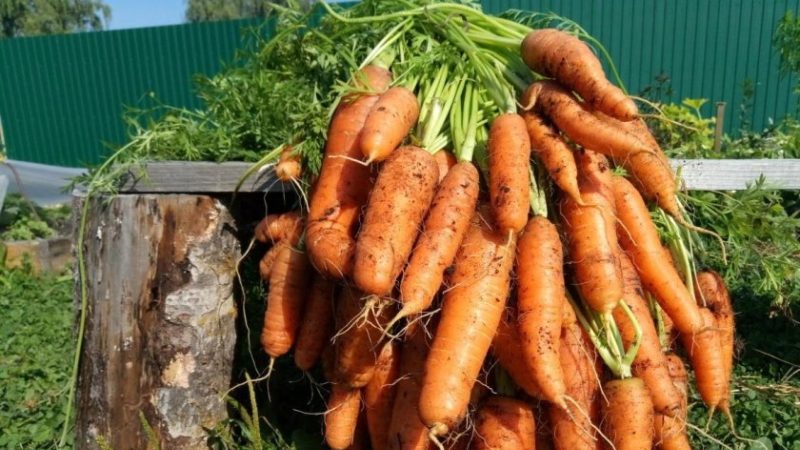
Origin and development
The variety was bred by Dutch breeders in 2004. It was included in the State Register of Agricultural Achievements of Russia in 2006.
Chemical composition, trace elements and vitamins, beneficial properties
100 g of carrots contain:
- dry matter – 11.6-16.8%;
- sugar – 6.5-9.6%;
- carotene – up to 21.4;
- vitamin C – 5 mg;
- B1 – 0.06 mg;
- B5 – 0.3 mg;
- B6 – 0.1 mg;
- calcium – 27 mg;
- magnesium – 38 mg;
- sodium – 21 mg.
Carrots normalize metabolism, strengthen the immune system, and have a beneficial effect on visual function. It is useful to consume the vegetable for people with anemia, hypo- and avitaminosis, with cholelithiasis and metabolic polyarthritis.
Features of application
Root vegetables are suitable for fresh consumption and are used for preparing vegetable salads, juices, baby puree, added to first and second courses.
Ripening time and yield
This is a late-ripening variety - the crop reaches technical maturity 110-150 days after sowing the seeds.
The average marketable yield is 180-340 c/ha.
Reference. The maximum yield was recorded in the Voronezh region - 504 c/ha.
Resistance to diseases and pests
The variety is resistant to fusarium, but in conditions of high humidity it can be affected by gray rot and powdery mildew.
Berlicum Royal is not afraid of carrot flies. The dangers for it are umbrella moths, wireworms and cutworms.
Characteristics, description of appearance, taste
 The variety is characterized by a semi-spreading rosette consisting of 10-15 long, medium-dissected green leaves.
The variety is characterized by a semi-spreading rosette consisting of 10-15 long, medium-dissected green leaves.
The root vegetables are cylindrical in shape with a blunt end, reach a length of 20-23 cm, a diameter of 3-5 cm and weigh on average 120-190 g.
The surface is smooth and even. The bark and well-formed core are deep orange. The pulp is crispy, juicy and sweet, without bitterness.
For which regions is it best suited and what are the climate requirements?
The variety is included in the state register with permission for cultivation in the Central, Far Eastern and Central Black Earth regions.
Thanks to its ability to adapt to different climatic conditions, Berlicum Royal is successfully cultivated in all regions except the northern ones, where root crops do not have time to ripen.
The main advantages and disadvantages of the variety
Pros:
- pleasant sweet taste, juiciness;
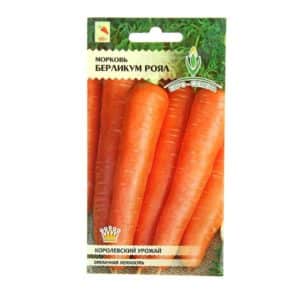
- possibility of universal use of root crops;
- good keeping quality and transportability;
- unpretentiousness;
- high beta-carotene content;
- ability to adapt to climate;
- immunity to fungal diseases;
- drought resistance.
Among the disadvantages of the variety, there is a tendency for root crops to crack if the soil becomes waterlogged.
What is the difference from other varieties
Comparison of Berlicum Royal with other late-ripening carrot varieties in the table:
| Variety | Average weight of root vegetables, g | Root shape | Taste | Average yield, c/ha |
| Berlicum Royal | 120-190 | Cylindrical with blunt end | Sweet | 180-340 |
| Darina | 110-206 | Cylindrical with blunt end | Sweet | 170-336 |
| Dolyanka | 94-144 | Conical with a pointed or slightly pointed end | Sweet | 243-372 |
| Queen of Autumn | 85-230 | Conical with a slightly pointed end | Sweet | 265-576 |
Features of planting and growing
You can get a plentiful and high-quality harvest only if you create optimal conditions for carrots. Thus, Berlicum Royal does not develop well in the shade, so the planting site should be illuminated. Attention is also paid to the selection and preparation of planting material.
Preparing for landing

Seeds are sold in bulk, on tape and glazed. In the last two cases, they are treated with growth stimulants and fungicides, which accelerates their germination and increases resistance to diseases and pests, so no additional preparation is required.
Loose planting material is pre-soaked for 4-6 hours in a solution of growth stimulants (Kornevin, Epin) at the rate of two drops of the drug per 100 ml of water at room temperature.
In the fall, the area is dug up to a depth of 10-15 cm and spilled with Bordeaux mixture for disinfection. After 7-10 days, add 10 kg of manure and 200 g of superphosphate per 1 square meter. m. and re-dig the soil.
Reference. In heavy soil At the same time as fertilizers, sand, peat or sawdust are added, and rotted compost is added to loams.
A month before planting carrots, the ground is dug up again and fertilized with compost and wood ash.
Soil requirements
The culture prefers loose, fertile soil with neutral (pH 6.5) acidity.The most suitable option is sandstone with a loose arable layer of at least 25 cm.
Predecessors
Carrots are planted after onions, potatoes, tomatoes, cabbage or cucumbers.
Dates, scheme and rules of planting
The variety is planted in late March-early April. In the southern regions, winter planting (late October-early November) is acceptable. The main thing is that the soil is warmed to +5...+7°C, and the air temperature is at least +15°C.
Planting pattern:
- Water the soil 2-3 days before sowing the seeds.
- Level the area, mark the rows at a distance of 15-20 cm from each other.
- Make landing grooves 2-3 cm deep in them.
- Place the seeds in them, keeping a distance of 5-7 cm and deepening them by 1 cm.
- Cover with a layer of soil.
Features of cultivation
The optimal temperature for the growth and development of carrots is +25°C. If the air warms up to +28°C and above, root crops stop developing.
Nuances of care
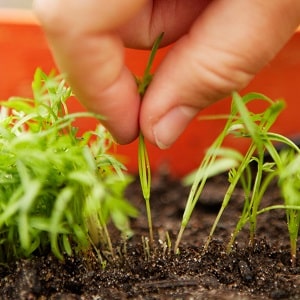
Despite the unpretentiousness of the variety, it is necessary to comply with the minimum agrotechnical requirements: watering, thinning, fertilization and pest and disease control.
Watering mode
The first watering is carried out immediately after emergence. Before the formation of root crops, the plantings are watered every three days, using 10 liters of water per 1 square meter. m, then once every 6-10 days, increasing the volume to 20 liters per 1 sq. m. Two weeks before cleaning harvest watering is stopped.
Reference. The water must be heated to ambient temperature. Water from a watering can into the rows.
Thinning and weed control
After each watering or rain, the soil is loosened to a depth of 5-8 cm to improve the access of oxygen and moisture to root crops and to avoid the formation of a dry crust on the soil surface. At the same time, weeds are removed.
After the emergence of seedlings, the first thinning of the plantings is carried out so that the distance between the sprouts is 4 cm. In the phase of root crop formation, the procedure is repeated, increasing the distance between plants to 8 cm.
Top dressing
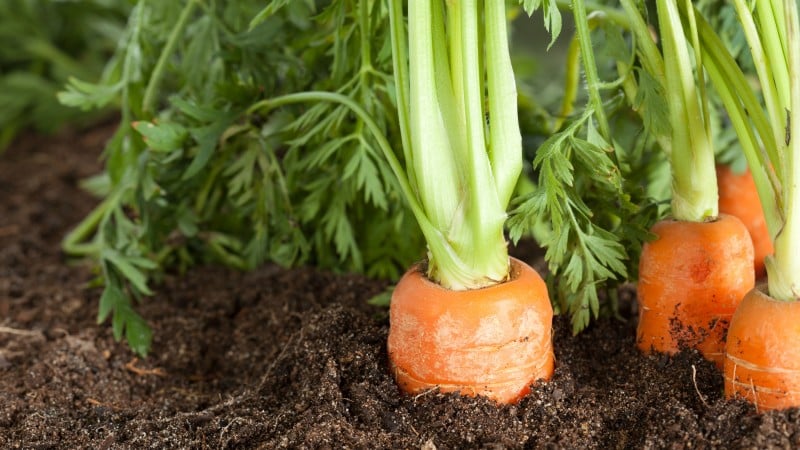
Fertilizers are applied according to the following scheme:
- in the emergence phase - nitrophoska solution (1 tbsp per 5 liters of water);
- 20 days after this - a solution of compost and wood ash (1 tbsp. compost and 200 g of ash per 5 liters of water).
To apply fertilizer, dig a ditch 5 cm deep in the center of the row spacing, pour the prepared solution into it and bury it.
Reference. During the growing season, it is prohibited to use fresh organic fertilizers.
Disease and pest control
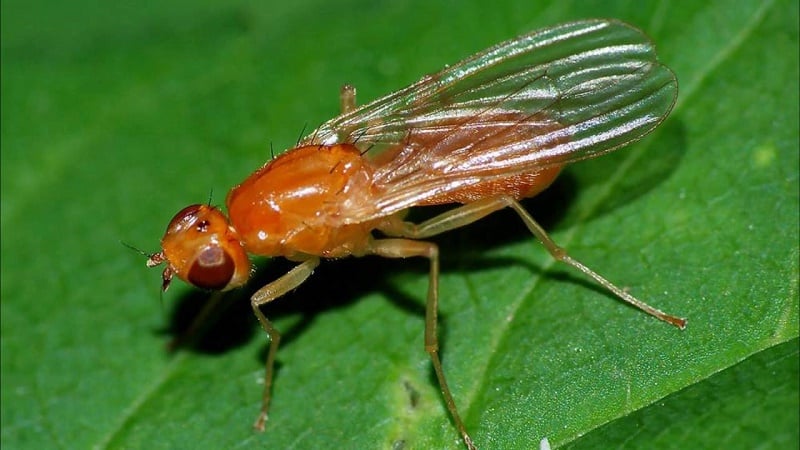
Diseases and pests that can affect Berlicum Royal:
| Disease, pest | Signs | Treatment |
| Gray rot | Dirty brown spots of irregular shape appear on the plants, on which greenish mold later forms. | Specimens affected by the disease are removed from the site, the soil between the rows is dusted with a mixture of wood ash and “Fundazol” in a 1:1 ratio. |
| Powdery mildew | The disease is characterized by the appearance of yellow spots on the green parts of plants. In just a week, the leaf part dies off and the roots become deformed. | |
| Umbrella moth | Butterfly caterpillars eat carrot leaves and root vegetables. | The affected parts of the plants are removed mechanically, the plantings are treated with insecticides and biological products, for example, Actellik or Voliam Flexy. |
| Wireworms | Plants develop slowly, wither, and leaves dry out. | The ground is watered with an infusion of dandelion, celandine, nettle or a solution of potassium permanganate. Insecticides used: “Polytrin”, “Initiator”, “Decis”, “Prestige”. |
| Scoops | Insect caterpillars gnaw off roots, young leaves and shoots, causing the plants to wither. | For control, chamomile or burdock infusions, the drugs “Lepidotsid” and “Metarazin”, insecticides “Arrivo”, “Polytrin”, “Fury”, “Proteus”, “Match” are used. |
Harvest and storage
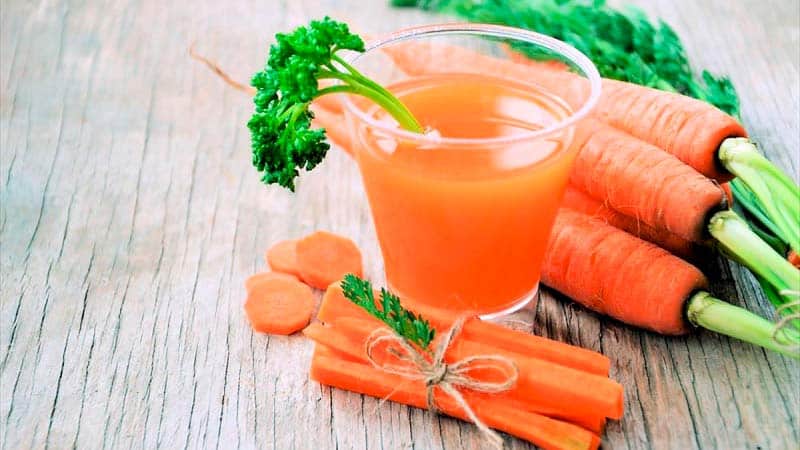
In the middle zone, provided that carrots are planted in late April-early May, the harvest is being harvested at the end of September, choosing a dry and sunny day.
Carrots are pulled out from soft soil by the tops, and from hard soil they are dug out with a pitchfork.
The harvested crop is freed from tops, dried in the sun, cleared of soil and sorted, setting aside damaged specimens for quick processing.
Carrots suitable for storage are placed in wooden or plastic boxes in two layers and taken out to a dark, well-ventilated place with a maximum temperature of +5°C and air humidity of 70%. Under proper conditions, the harvest is stored until spring.
What difficulties may there be when growing
Problems arising when growing Berlicum Royal:
- deformation, cracking of root crops - the result of excessive watering or planting the crop in saline or alkaline soil;
- cessation of development of root crops – high (more than +28°C) air temperature.
Advice from experienced gardeners
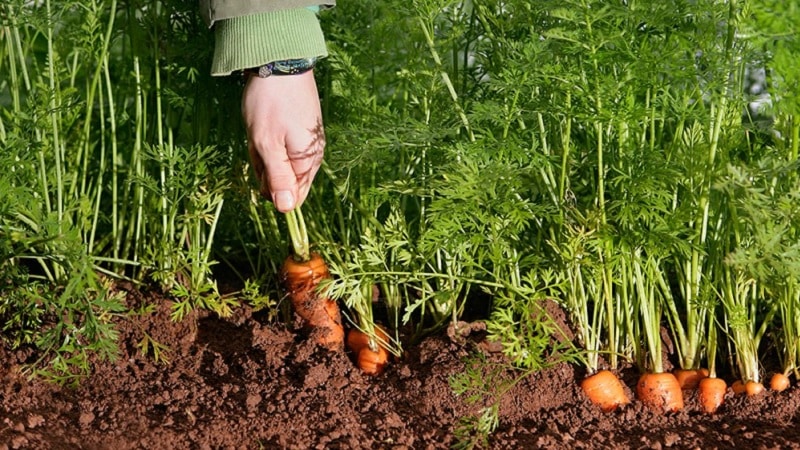
Farmers recommend:
- carefully monitor the frequency and abundance of watering to avoid cracking of root crops - this variety tolerates drought better than waterlogged soil;
- if you need to add organic fertilizer to the soil, do it at least six months before planting carrots, otherwise the fruits will be deformed or will not develop;
- buy for sowing seeds on a tape - they are more convenient to plant and do not require additional processing.
Reviews of the carrot variety Berlicum Royal
Gardeners who have tried to grow the Berlicum Royal variety speak positively about it.
Rita, Surazh: “Carrots are one of those vegetables that I plant every year. I tried different varieties, and eventually settled on Berlicum Royal. I like the fact that the variety is almost disease-free, no toxic chemicals are needed for additional processing, and the root vegetables themselves are beautiful and tasty. And the productivity is high.”
Olga, Voronezh: “I initially looked for a variety with a high carotene content, because my daughter has health problems, and it was carotene that she especially needed. Berlicum Royal is a record holder in this regard, which is why I chose it. I’m a beginner, I’ve never worked with vegetables before, but there were no problems - the carrots gave a good harvest, the root vegetables are large, sweet, and can be stored until spring without loss of quality.”
Conclusion
The variety is suitable for cultivation in all regions of Russia, except the northern ones. It is characterized by resistance to common diseases and pests, high yield, ease of care and the formation of large, juicy and sweet root crops with a record carotene content.